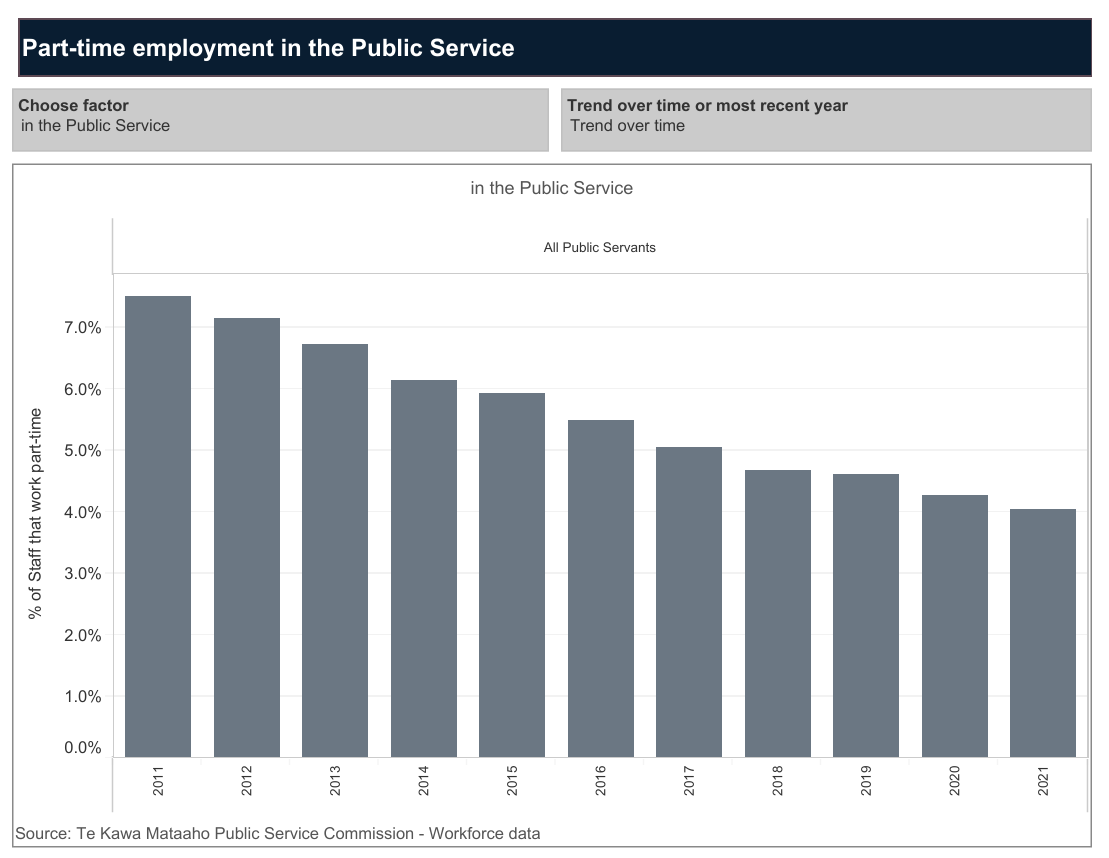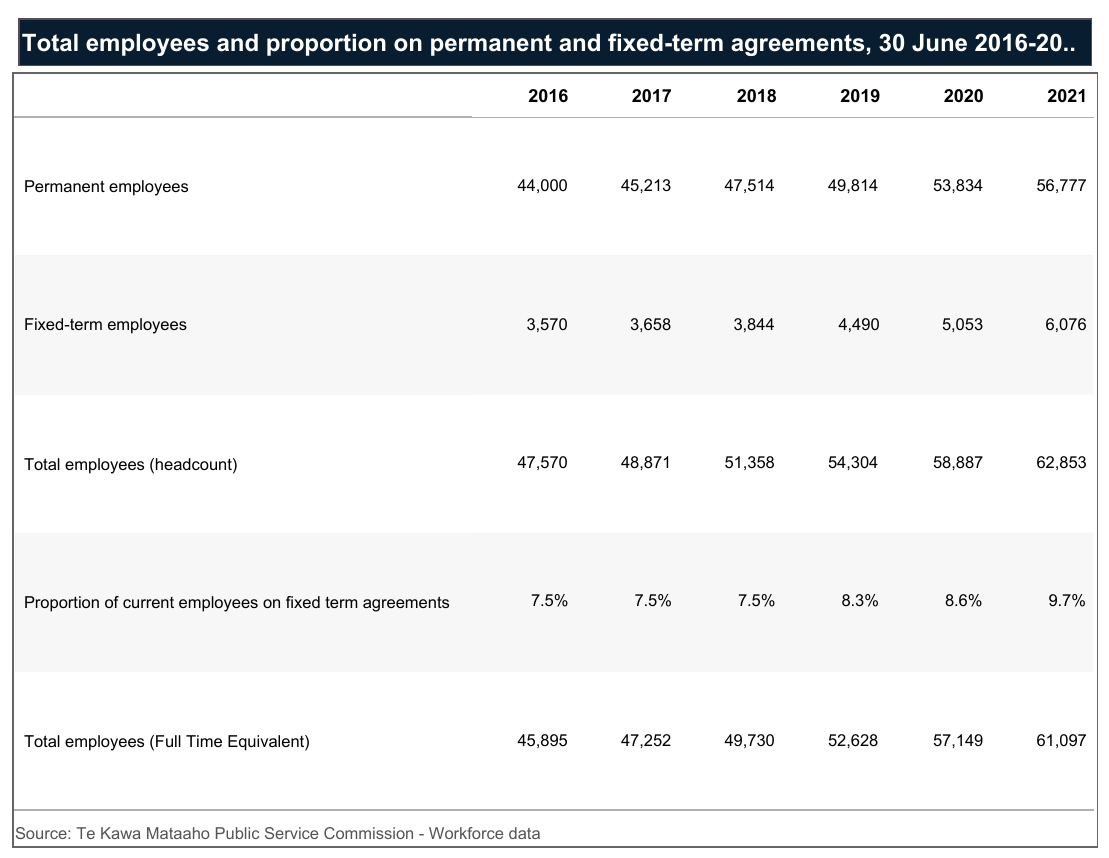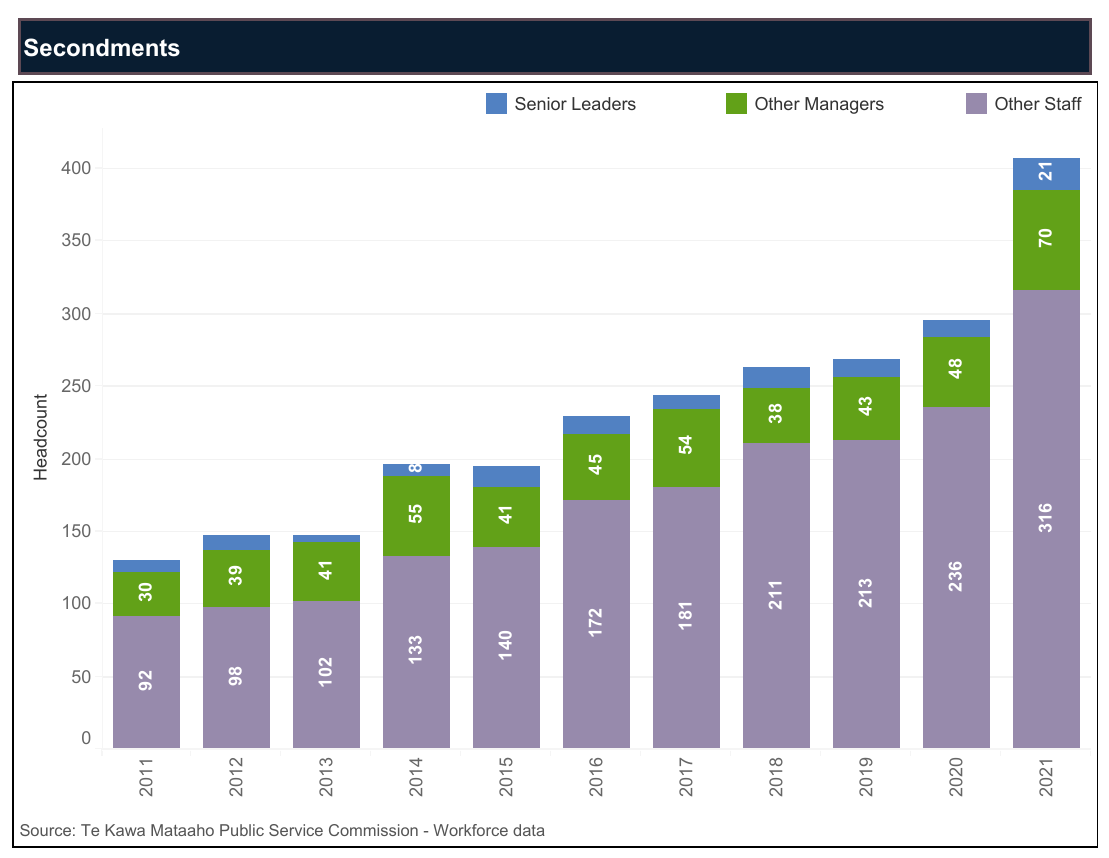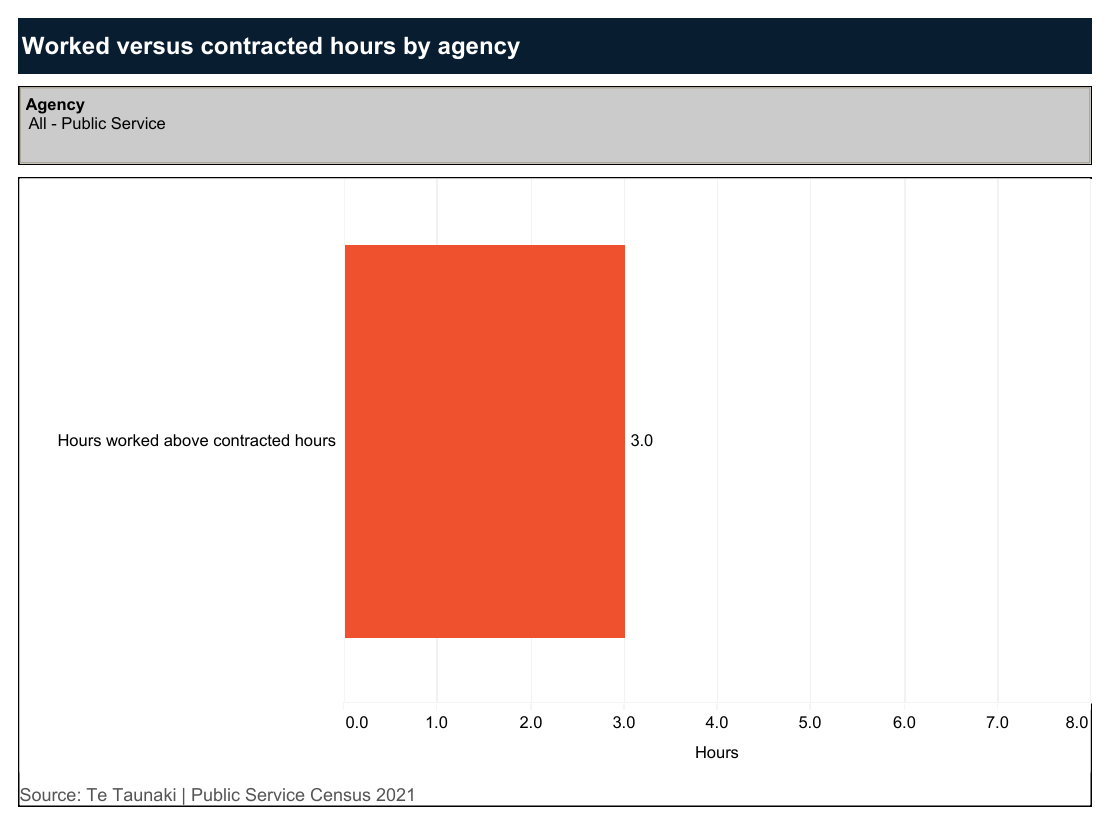-
Section 01
Workforce Data — Senior leadership 2021
-
Section 02
Workforce Data — Remuneration/pay 2021
-
Section 03
Workforce Data — Māori Crown 2021
-
Section 04
Workforce Data — Public sector composition 2021
-
Section 05
Workforce Data — Diversity and inclusion 2021
-
5.1
Workforce Data — Ethnicity in the Public Service 2021
-
5.2
Workforce Data — Gender representation in the Public Service 2021
-
5.3
Workforce Data — Rainbow 2021
-
5.4
Workforce Data — Disability 2021
-
5.5
Workforce Data — Age profile 2021
-
5.6
Workforce Data — Religion 2021
-
5.7
Workforce Data — Inclusion 2021
-
5.1
-
Section 06
Workforce Data — Working in the Public service 2021
-
Section 07
Guidance: Data drilldown and technical guidance 2021
The data we collect gives us information about part-time, permanent and fixed-term public servants, as well as secondments and hours contracted versus hours worked.
Part-time employees
The graph below shows the percentage of Public Service staff in part-time work between 2011 and 2021 — a part-time job is defined as someone working less than 0.75 of a full-time equivalent position.
Over this period, despite legislative reforms that widened access to flexible working arrangements, the percentage of part-time workers has been trending downwards (7.5% in 2011 to 4.0% in 2021). Figures from Stats NZ’s Household Labour Force Survey shows there’s also a downward trend in the wider labour market (from 22.2% in the year to June 2011 to 20.0% in the year to June 2021).
On average, part-time workers are paid 11.1% less than full-time workers on a full-time equivalent basis (as at 30 June 2021).
The use of part-time employment as a flexible working option can be better understood by analysing the demographic profile of people who work part-time, as well as other factors (for example, their occupation and the type of employment agreement). These factors are explored in the visualisation below.

The visualisation above shows that part-time work is high in early career (probably in conjunction with study), during the ages when caring for children is more likely, and near retirement age.
Part-time work is considerably more likely to be taken up by females than males. This is likely due to social norms around women’s role as carers.
Part-time work is more prevalent in some occupational groups: ‘social, health and education workers’ and ‘clerical and administrative workers’. These are also the occupations most held by women. Occupations that are male dominated (for example, ‘ICT professionals and technicians’) are less likely to be worked part-time.
A higher proportion of fixed-term employment agreements are for part-time work compared to permanent employment agreements.
Employment type: permanent and fixed-term
Fixed-term employees are employed on a full-time or part-time basis for a specified period of a project or event. The visualisation shows the number of Public Service employees on fixed-term employment agreements for the years 2016–2021.
At 30 June 2021, 90.3% of Public Service employees were on permanent employment contracts with the remaining 9.7% of employees on fixed-term contracts. This is up from 8.6% last year and is the highest proportion of employees on fixed-term contracts since 2000. The Government’s response to COVID-19 has contributed to this increase. For example, Customs employed 235 fixed-term assistant customs officers to give effect to the COVID-related Maritime Border Order.
Organisations with a high proportion of staff on fixed-term employment contracts include:
- Pike River Recovery Agency (100%)
- Department of the Prime Minister and Cabinet (29.4%)
- National Emergency Management Agency (29.0%)
- Ministry of Defence (26.3%)
- Department of Internal Affairs (22.6%)
- Ministry of Health (22.4%).

Total employees and proportion on permanent and fixed-term agreements, 30 June 2016-2021
Secondments
There were 407 Public Service employees on secondment as of 30 June 2021. This is up 111 on the 296 secondments in 2020 and is the highest number since the Workforce Data collection started in 2000. Note secondments within departments are not included in these figures.
The number of secondments in leadership and management positions increased from 60 as of 30 June 2020, to 91 in 2021 — an increase of 51.7%. Senior public servants mobilised to support organisations to deliver the Government’s response to COVID-19.

Hours contracted versus hours worked
In Te Taunaki Public Service Census 2021 participants worked on average 41.1 hours per week against a contracted rate of 38.1 hours, leading to an overall gap of 3 hours.
